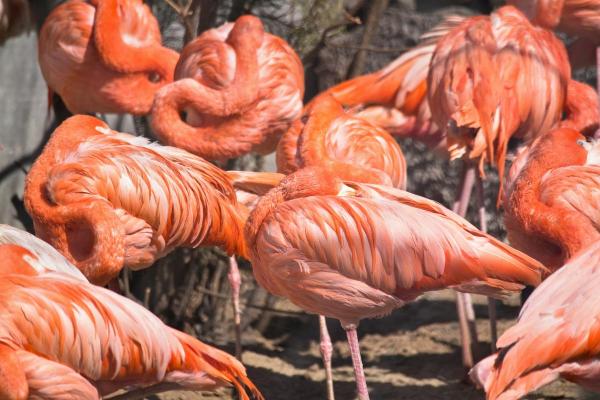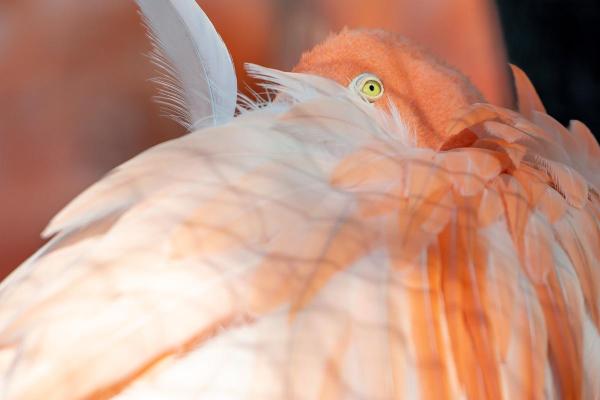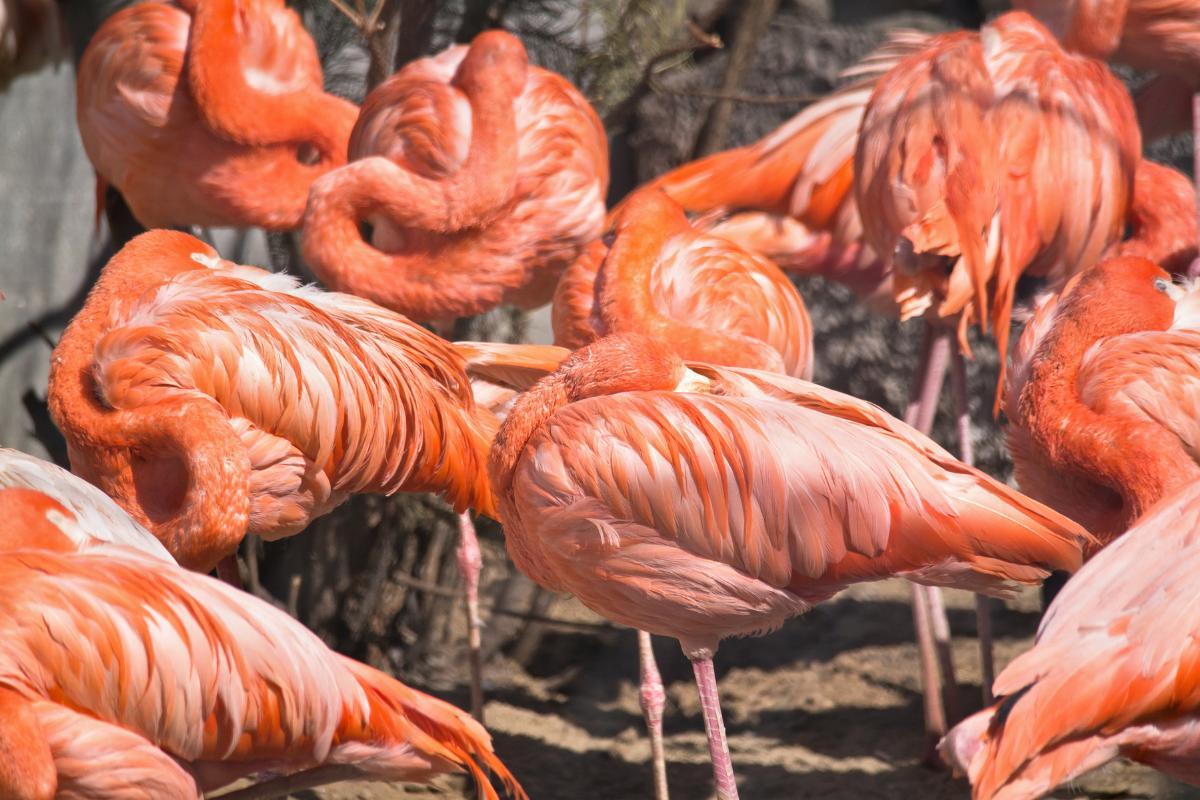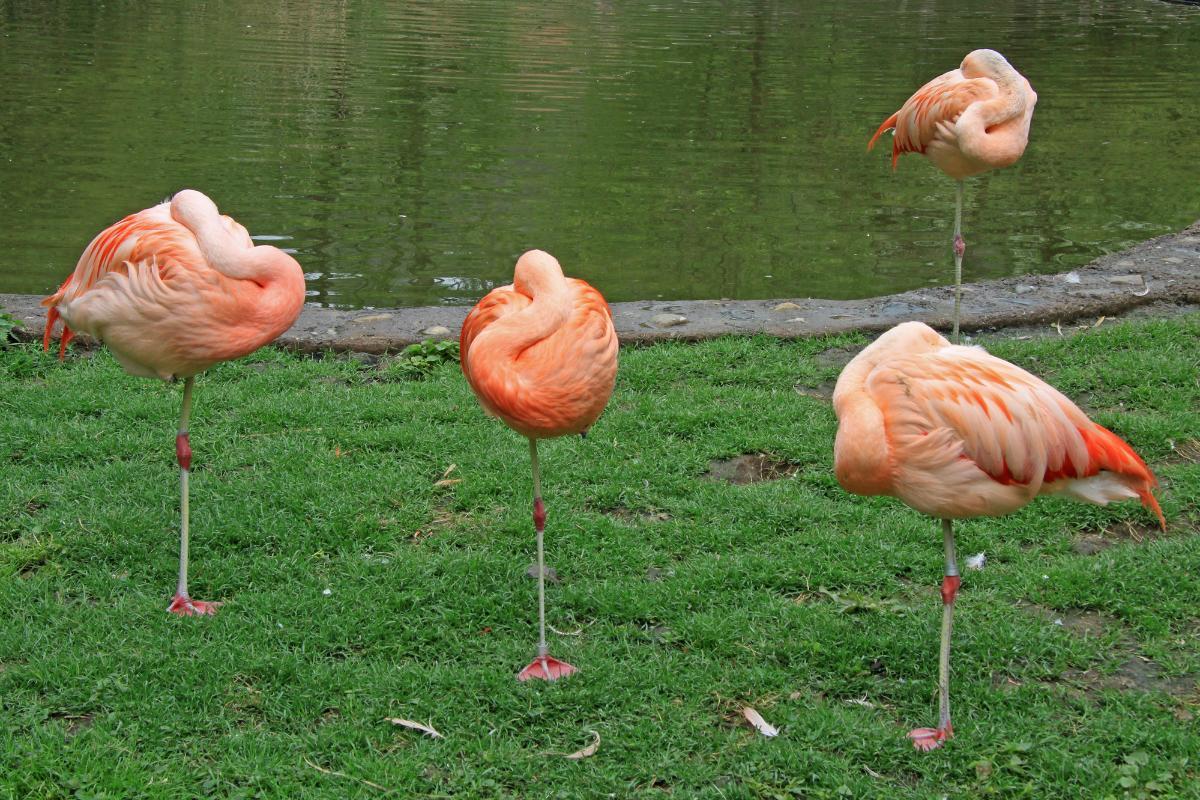How Do Flamingos Sleep?


Flamingos are famous for standing on one leg. They carry out many of their natural behaviors in this unipedal stance, including eating with their head upside down. They can have amazing balance. We might feel comfortable standing on one leg for a short amount of time, but few of us have ever managed to fall asleep doing so. Certainly not with any regularity. Flamingos have very particularly anatomical characteristics which allow them to carry out necessary functions in different ways.
Keeping these anatomical characteristics in mind, AnimalWised asks how do flamingos sleep? We look into whether flamingos sleep standing up and what benefits this might bring to the survival of their species.
Do flamingos sleep standing on one leg?
A flamingo's ability to sleep is thanks to their various physical adaptations which give them their unique appearance. While it is an aesthetically beautiful sight, flamingo physicality has very practical purposes. In answer to the question above, flamingos do sleep standing on one leg. It isn't the only way they sleep, but it is very common. To understand the reasons why flamingos sleep standing up, we look at how flamingos sleep:
While resting either in water or on land, they often adopt the position in which they keep one leg raised while standing on the other. When asleep, they rest their head on their body or hidden under the plumage of their back. This behavior not only provides a comfortable way to sleep, but also performs various essential functions.
Flamingos will also sleep with one eye open. This is something which allows them to stay alert to potential threats such as predators or adverse weather phenomena. They also provide extra protection by sleeping in groups. By concentrating their numbers at the edge of the water, they can provide surveillance of both the water and land. This includes the presence of predators from under the water.
Sleeping on one leg might seem counterproductive to security, but it provides important benefits for the animal. One of the most important is thermoregulation. By standing on one leg, flamingos reduce the surface area exposed to the air and help to conserve heat energy. This helps them to regulate their body temperature.
Unlike humans, flamingos don't have a very strict sleeping schedule. They are considered diurnal animals, meaning they are most active during the day. However, they don't only sleep at night and can often be spotted at test during the daylight hours. Rather than sleeping for one long period, they sleep in shorter stretches of time at various stages during the day and night.
Some people think that flamingos must have a locking mechanism to allow them to sleep on one leg for prolonged periods. This is not quite the case, but they do have specially adapted legs which allow them to do so. Although they don't have truly locking legs, their joints and tendons are such that they create a stable base and cannot fall over easily. They may prefer to sleep on one leg over the other, but they can switch periodically.
Now we know about how flamingos sleep, we might want to know about their other functions. You can do so with our article on whether flamingos fly.

How much do flamingos sleep?
We have already explained about how flamingoes sleep on one leg, but this is not the only way they sleep. They can also sleep lying down or standing on both legs when this is deemed best. They will sleep lying down when on land. When the water is too deep to stand on one or both legs, flamingos can swim on the surface. It is possible they may sleep when doing so.
The amount of time flamingos spend sleeping will also depend on the circumstances. These include environmental factors, as well as the individual bird. For example, older flamingos may sleep longer than younger specimens. With this in mind, a flamingo can sleep anywhere from 5 to 12 hours in a given day. This occurs in short bursts which can be interrupted easily, especially since they remain alert.
Although it doesn't happen in the same way as us, flamingos do experience both rapid eye-movement (REM) and slow-wave sleep (SWS) sleep. These phases of sleep depend on the amount of brain activity which is occurring. For REM sleep to occur, it usually takes some time. They may be less alert during REM, but this is difficult to determine. This is partly because wild flamingos may have different sleep patterns than those in captivity.
Discover more about how flamingos survive in their various habitats by learning where flamingos live in the wild.

Where do flamingos sleep?
Where flamingos choose to sleep is influenced by various factors, including the species of flamingo, the environment and environmental conditions. Generally speaking, flamingos can sleep either:
- On land: flamingos are types of wading birds, meaning they spend a lot of time in the littoral spaces along various bodies of water. However, they are not always in the water. Perhaps there is a predator in the water, the water quality is poor or there is another reason, but flamingos often sleep on land.
- In water: various bodies of water provide flamingos with the things they need for survival. Since they feed using their mouths to filter water for algae, small crustaceans and other food, they need to be near the water. It makes sense that they will sleep in these areas too. They can sleep both in the water standing on one leg or floating on top of the surface.
Since flamingos live together in large flocks, it is often the case that some may be on the land and others in the water. Weather phenomena also influence where they will sleep. For example, if it is very hot, they may sleep on the water if it is cooler. Equally, they may choose to sleep on the land where they can find a shaded area to protect themselves from the sun.
Flamingos are types of migratory birds. This means they don't have a single habitat, but will travel to different parts of the globe for different purposes. For example, they will often go to specific areas for reproduction where they have better nesting sites. Their choices when doing so are based on safety of their offspring and ensuring they have enough resources to provide for them.
You can learn more about flamingo reproduction and other behaviors with our article on fun and interesting facts about flamingos.

If you want to read similar articles to How Do Flamingos Sleep?, we recommend you visit our Facts about the animal kingdom category.
- Anderson, M.J. (2009). Lateral neck-resting preferences in the Lesser Flamingo (Phoeniconaias minor). Flamingo. Bulletin of the IUCNSSC/Wetlands International Flamingo Specialist Group, 17, 37-39.
- Anderson, M.J., & Williams, S.A. (2010). Why do flamingos stand on one leg? Zoo Biology, 29(3), 365-374.
- Bouchard, L.C., & Anderson, M.J. (2011). Caribbean Flamingo resting behavior and the influence of weather variables. Journal of Ornithology, 152, 307-312.
- Delfino, H. C., & Carlos, C. J. (2022). What do we know about flamingo behaviors? A systematic review of the ethological research on the Phoenicopteridae (1978–2020). Acta ethologica, 25(1), 1-14.
- Jaslow, A.P., Groves, A., & Bartlett-Prescot, J. (1997). Social behavior in the Chilean flamingo, Phoenicopterus chilensis. Rhodes Journal of Biological Sciences, 15, 17-20.







